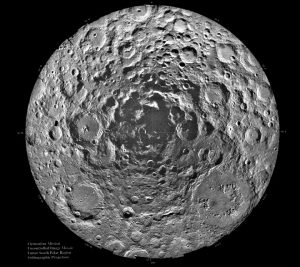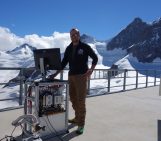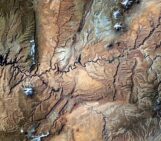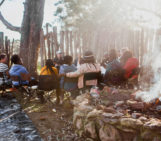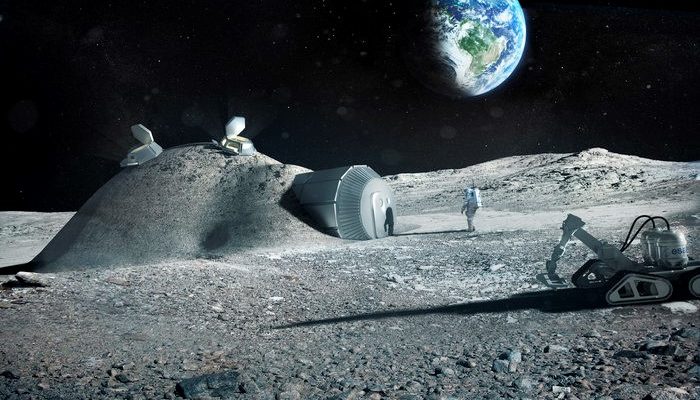
What does it take to build a habitat in ice on the Moon? An international group of university students and professionals is working together to provide this answer and develop a sustainable and operational habitat in lunar ice. The project is called IGLUNA and is organised by the Swiss Space Center and the European Space Agency (ESA) as the first initiative from ESA_Lab, an ESA interuniversity research platform where young professionals across Europe can work together on space projects.
Many of the participating students from Vrije Universiteit Amsterdam in the Netherlands presented their work on IGLUNA at the European Geosciences Union General Assembly in Vienna last month. Arlene Dingemans, a VU Amsterdam student and project participant, says,
At the moment, we are a pilot team, the first one working on this project, and we really hope that future teams will develop further this research and maybe, one day, we can go to the Moon!
Human life as we know it today, can only survive under specific environmental conditions; we need the right kind temperature, atmosphere, gravity, radiation, and access to oxygen and water to properly function. On Earth, we have all the necessary resources but as far as we know, our planet is the only place where human life can thrive. Thus, it is vital to carry out research and experiments in order to better understand how human life can be sustainable in places with harsh conditions. The Moon is our closest planetary object and the best place to investigate how life can be supported there.
As part of their project, the group will be testing an analog lunar habitat on Earth, on a glacier in Zermatt, Switzerland, under cold and harsh conditions similar to the Moon’s ice craters in the south pole.
Building a habitat in ice on the Moon also has several benefits. Firstly, water (ice) is essential for life as we know it on Earth, but it can also be used to produce oxygen and fuels. Furthermore, ice is a great insulator for cosmic and solar radiation, and it can function as a shield against micrometeorites.
The field campaign will also involve operating several different experiments that could hypothetically be done on the moon. Operations will start operations on 17 June, lasting until 3 July; during this time the habitat will also be open to the public, allowing visitors to watch and even take part in experiments.

The entrance tunnel into the Glacier Palace in Klein Matterhorn, Zermatt, Switzerland, where the IGLUNA habitat will be constructed. Credit: Swiss Space Center (SSC) / IGLUNA
The research conducted by the VU Amsterdam team in IGLUNA will focus on geological, glaciological, and astrobiological experiments. Bernard Foing, a professor at VU Amsterdam supervising the student team, highlights: “It’s important not only to live on the Moon, but also to do something really useful. We are going to learn about the Moon, about the Earth, [and] do astronomy. Also this project is a way to exchange expertise and to learn a lot through hands-on activities.”
Marc Heemskerk, participant and student coordinator explains:
The simulation aims to prepare ourselves and humanity in the best possible way for going to the Moon and living there in a semi-permanent or permanent basis. And I really think that it’s not a question of whether we will go to the Moon, but of when we will go. So, eventually, we will have to learn how to live there and how to use local resources.
Transferring resources from the Earth to the Moon in order to build a base it is extremely expensive in terms of energy and money, hence, it is vital to use local materials, Heemskerk explains.
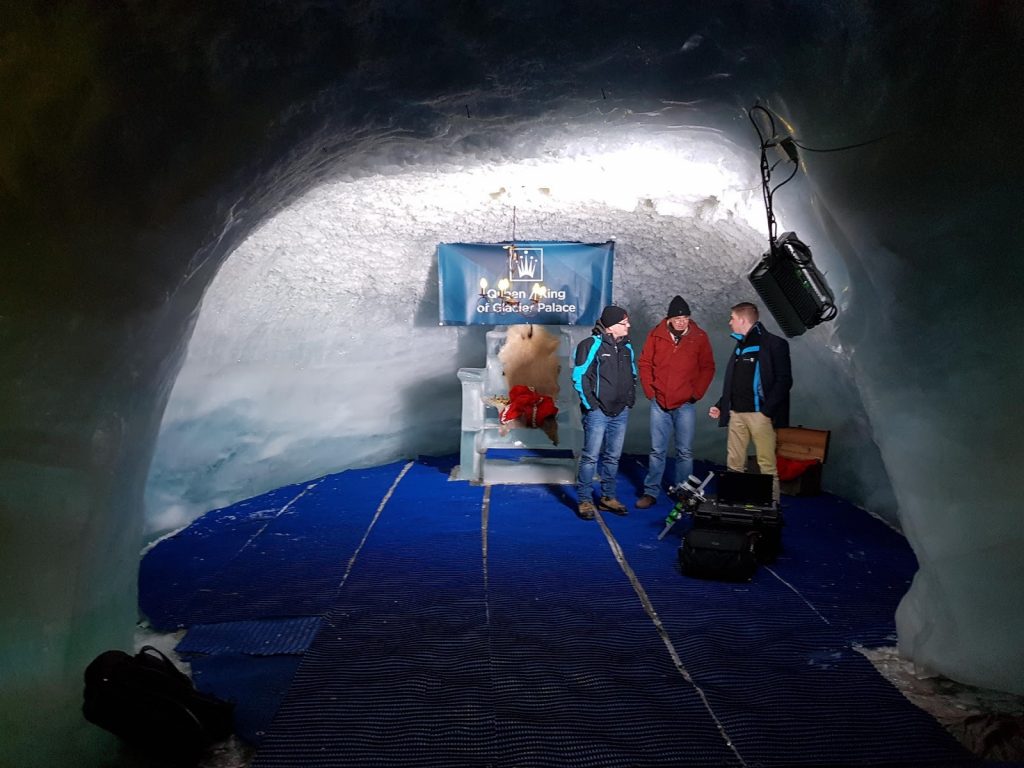
The cave in which the IGLUNA habitat will be constructed – 15m below the surface of the Matterhorn Glacier, Switzerland. Credit: Swiss Space Center (SSC) / IGLUNA
The construction of an operational habitat requires knowledge and skill exchange between people from different backgrounds. 20 student teams coming from 13 universities in nine countries around Europe from multiple disciplines work together to address the challenges of building an effective structure, which one day could be fully independent and operational on the Moon.
Dieke Beentjes, a participating student emphasizes:
What is also interesting is that our research team is already multidisciplinary. We started out as a team of geologists and now we also have biologists, as biological research is different and needs different instruments – to look at DNA and life traces for example.
The scientific equipment includes cameras, a spectrometer, a microscope, telescopes, a seismometer, drones and many others.
This initiative inspires students to think about the idea of a habitat, while increasing international relationships and collaborations. Marjolein Daeter, another project participant says, “It’s more like an opportunity to get to know this world and we get help from our university and ESA to do that. It’s fun to work with different people on this.”
If you are interested about the project, you can follow the link here: https://www.spacecenter.ch/igluna/
By Anastasia Kokori, EGU Press Assistant
References
Benavides, T. et al.: IGLUNA – Habitat in Ice: An ESA_Lab project hosted by the SSC. Geophysical Research Abstracts, Vol. 21, EGU2019-17807, 2019 (conference abstract)
Daeter, M. and Dingemans, A.: VU Science Experiments (VUSE) for Igluna, a science showcase for a Moon ice habitat. Geophysical Research Abstracts, Vol. 21, EGU2019-17500, 2019 (conference abstract)
De Winter, B. et al.: VUSE, VU Science Experiments at Igluna, a Science Showcase for a Moon Ice Habitat. 50th Lunar and Planetary Science Conference 2019 (LPI Contrib. No. 2132) (conference abstract)
Heemskerk, M. V. et al.: IGLUNA Habitat in Ice: An ESA_Lab project hosted by the Swiss Space Center. 50th Lunar and Planetary Science Conference 2019 (LPI Contrib. No. 2132) (conference abstract)

